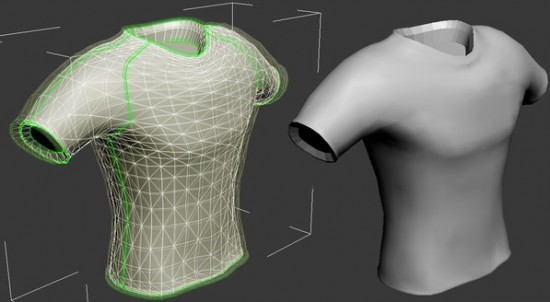Second Life has recently rolled out support for mesh objects. One key benefit is realistic clothing and accessories. However, Second Life’s implementation of mesh does not automatically adjust to the size of avatar bodies — and OpenSim, which is still heavily dependent on Second Life-compatible viewers — is limited in the same way.
To learn more about why this is a problem, read Mesh: A Cry for Help, Answered! by Saffia Widdershins, Maxwell Graf, and Aisling Sinclair.

Second Life users, led by digital artist Maxwell Graf, called on Second Life to fix the problem by adding a “mesh deformer” — a feature that would automatically resize mesh clothing. Second Life users can see the request here — and more than 800 supporting comments — on Second Life’s “Jira” bug-tracking page. But this wasn’t enough to spur Second Life to action.
“Apparently, the Jira I posted about mesh clothing, has been downgraded… to ‘someday maybe’ status,” wrote Graf on his blog.
So he and other mesh users have decided to fix the problem themselves, in the first example of publicly funded development in Second Life.
Previously, many volunteers have contributed work to improve Second Life viewers, and some developers have worked on a commission basis to design custom viewers or custom features for OpenSim grids.
And, in August, a single company — Daden Ltd. — paid a “small bounty” to add support for automated, non-player characters, to OpenSim.
But this is the first case of a group of users coming together, costing out a project, finding a developer, and publicly raising money.
In particular, it will cost $5,400 to build the mesh deformer, and the work will be carried out by Karl Stiefvater (formerly Qarl Linden), a developer who’s previously worked for Linden Lab. Stiefvater is the guy responsible for sculpted prims and mesh in the first place, and is uniquely qualified to work on this project.
The project, which was only announced a few hours ago, has already reached more than 13 percent of its goal. (Follow the status of the project or donate to it here.)
Once completed, the mesh deformer code can be used in any third-party Second Life viewer to benefit users of Second Life and OpenSim grids.
“It is our hope that the developers of Second Life will adopt this code to include it into the official client releases as well,” said Graf in the project description.
- OSgrid back online after extended maintenance - April 16, 2025
- Analysts predict drop in headset sales this year - March 25, 2025
- OSgrid enters immediate long-term maintenance - March 5, 2025
